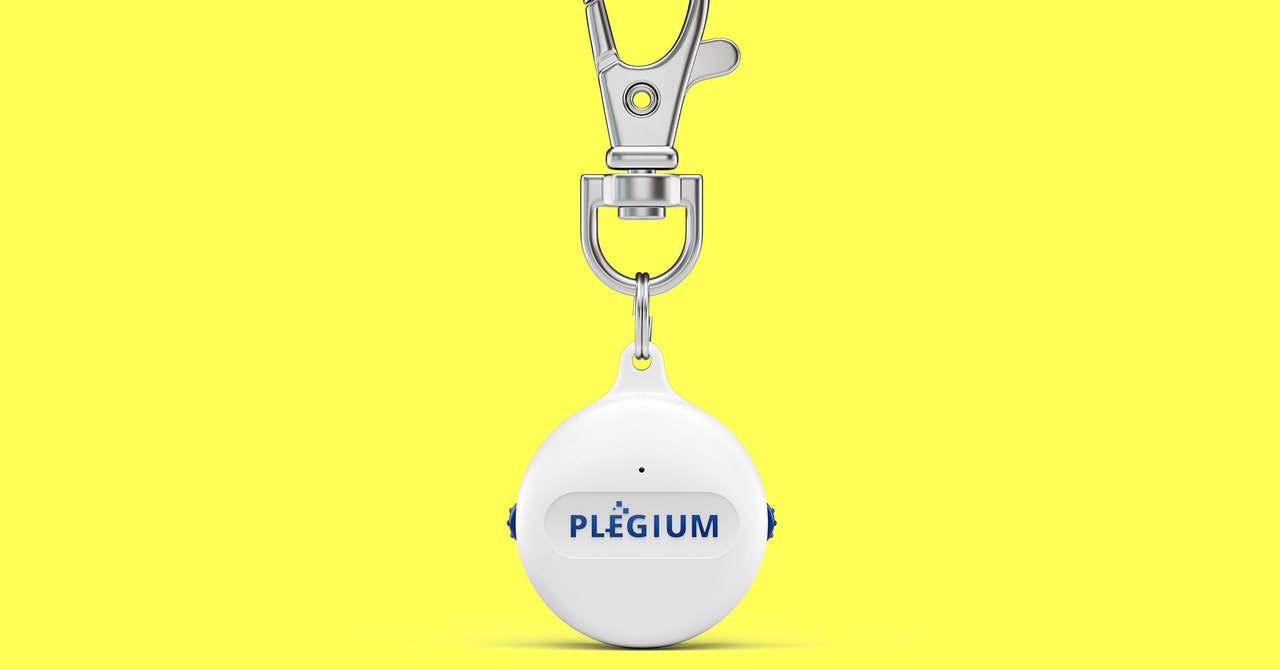
WIRED senior associate editor Adrienne So tried testing the incident detection feature with her Garmin Venu 2S and couldn’t get it to activate after a fake fall, so we can’t say for sure how well this would work during an actual incident. Still, So says she feels generally much safer on runs, thanks to her Garmin’s location tracking. Like most of these wearables (except for Apple Watch, which you can set up a separate cellular plan for), your phone will have to be with you for this to work. And of course, you’ll have to make sure you activate these safety features first.
More Safety Accessories
If You’re Off the Grid …
If you’re a frequent camper or hiker, or are otherwise away from cell service often, most of the products here aren’t going to help you in an emergency. That’s where a satellite messenger comes in.
We have a guide with a few picks for different situations. The Spot X is old-school and doesn’t work if you’re crossing the ocean. But its two-way texting, mapping, and tracking work independently, so if your phone is dead, broken, or MIA, this thing will work. We really love the Garmin inReach Mini, but it’s now discontinued and only available used.
A Flashlight Works Too
I’ve talked to several self-defense teachers over the years who always recommend flashlights as personal safety devices—yes, more than mace or a pocket knife. A flashlight obviously lights your way while you walk in the dark, which might help you see someone otherwise cloaked by darkness, but there are two other reasons why these work. Putting a flashlight up to someone’s eyes will disorient them, hopefully long enough to let you get away. I’m nearly blinded by an iPhone’s camera flash, so imagine thousands of lumens directly to your eyeballs. If it was truly a kind stranger asking for directions and not a threat, you didn’t actually harm them, and you’ll be far away before you know any different. (Sorry, stranger.)
If that fails, you can use it to, frankly, hit them. A hunk of metal to the face will hurt worse than your fist, and won’t hurt you in the process. Get a good swing and run. Of course, though, like any weapon, it can be taken from you and used against you, so keep that in mind.
Infinity X1 flashlights are bright. I tried the 4,000-lumen one that lit up the room brighter than my actual lights do. That one is out of stock as of this writing, but an even brighter 5,000-lumen light is also available. Both have two cores, one that holds the batteries and one that’s rechargeable. It can also charge your phone, so it’s not bad to keep on hand for emergencies anyway. It’s heavy and long, which is good if you need to swing it, but it won’t be easy to stow in your purse.
★ Cheaper options: Any flashlight with some heft will do, and there are a few others we really like. WIRED writer Matt Jancer recommends the 350-lumen Fenix E20 V2 ($45) in his Guide to Creating a Home Emergency Kit. It’s compact, so it shouldn’t be too annoying to throw in your bag, but it’s still constructed of tough metal. For even less, writer Louryn Strampe recommends the 900-lumen Anker Rechargeable Bolder ($34), which even has a strobe function. It’s a lot smaller, but it will still pack a harder punch than a lone fist.
How We Tested
We tested built-in smartphone functions, third-party apps, internet-connected jewelry, and other personal safety devices designed to get you in contact with help when you need it. We set off panic buttons where applicable and talked to responders, or went through training exercises provided by the companies. Most of the products are capable of signaling your need for help without requiring you to speak to anyone, so you don’t have to dial a number or voice your concern aloud when it would be unsafe for you to do so.
None of these products provides a comprehensive solution for every scenario, but they each offer some form of protection. In some localities, it’s illegal to carry a concealed weapon like a knife or even pepper spray, and using those things can put you in further danger. So the methods we highlight here are an alternative to brandishing a weapon.
We approached our testing with inclusivity in mind, acknowledging that different groups may have different personal safety needs or feel vulnerable in situations where others don’t. While we think women, people of color, and members of the LGBTQIA+ community would benefit from some of these products the most, cisgender straight men are also at risk of violence, even if they don’t hear the same warnings we do. Most of this advice focuses on one-on-one violence, but mass shootings are also a fear that Americans are constantly battling. These things might help get you in contact with help quicker, but they haven’t been tested for that sort of chaos.
Services Marketplace – Listings, Bookings & Reviews
